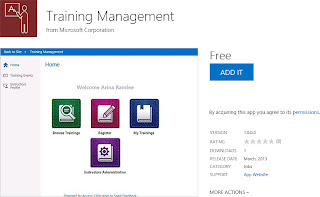On October 15, I posted this question on SPYAM. Although I only received 3 responses, no one objected to the idea. I thus went into my client's SharePoint 2013 environment and deactivated MDS on all of the sites...or so I thought.
Minimal Download Strategy is a new feature in SharePoint 2013 that reloads only the parts of the page that have changed. MDS works well with Team sites and is automatically activated when you create a Team site. Unfortunately, it can cause the page to load twice on Publishing sites.
The reason we had Publishing features activated on Team sites was to make use of an app that we had downloaded from the SharePoint store. It worked fine on Team sites but gave us a 503 error on Publishing sites. Because we had a custom master page with custom CSS, we had built the main web app using the Publishing site template. To quickly get around the 503 error, we rebuilt the web app with the Team site template and manually activated the Publishing features.
A few weeks later, we noticed that some sites were throwing an error after changing the view in a list. The error always started with a number, but that number varied. The rest of the error was always the same, as seen in the example below.
86|pageRedirect|owssvr|http://webapp.clientname.com/dept/finance/acctg/Lists/icontacts/AllItems.aspx
After much research and testing, my co-worker and I discovered the problem. The list view error was only occurring on the sites where MDS was (unintentionally) still enabled. By deactivating MDS on those sites, we eliminated the list view error. My co-worker's full explanation is below.
"The OWSSVR.dll is a Remote Procedure Call (RPC) component of SharePoint. It’s part of a web service, that among several other things, accesses list and library functions through CAML queries. In this case the Minimal Download Strategy (MDS) Feature uses this web service like an AJAX call to only refresh page level elements rather than the whole page itself. This is a way Microsoft tries to increase perceived page load performance.
"I found if we disable this feature the OWSSRV.dll 6500 error no longer occurs when saving List Views and I have not found any additional impact on disabling this feature."


















